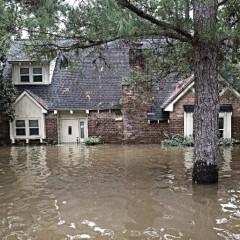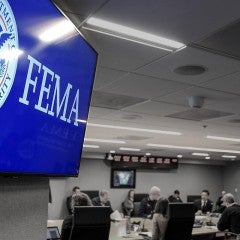This designation is meant to ensure these neighborhoods get priority when it comes to federal funding for resilience and mitigation projects, which is especially important in a region hit with disasters as often as Greater Houston. Parts of Kashmere Gardens and Gulfton, which have been battered by extreme weather in recent years, are among those receiving the designation. More areas are expected to be identified by FEMA later this year and next year.
Prompted by the 2022 Community Disaster Resilience Zones Act, “these designations will help ensure that the most at-risk communities are able to build resilience against natural hazards and extreme weather events, which are becoming increasingly intense and frequent due to climate change,” FEMA Administrator Deanne Criswell said in a press release.
These specific “census tracts” are designated resilience zones for at least five years based on two criteria. First, a community must be identified as disadvantaged by the federal Climate and Economic Justice Screening Tool, and second, it must rank in the top 50 nationally or the top 1% in its state on a version of FEMA’s National Risk Index, which rates census tracts based on their vulnerability to a range of natural hazards.
According to FEMA, one program these tracts will have prioritized access to is the Climate-Smart Communities Initiative funded by the Inflation Reduction Act, through which awards will be granted to “accelerate the pace and reduce the cost of climate resilience-building.” FEMA also hopes the private sector and civil society actors such as nonprofits, philanthropies and other non-federal partners will direct investments toward the resilience of those in disaster resilience zones.
These efforts offer grounds for cautious optimism, according to Jim Elliott, a sociology professor at Rice University who has researched inequities in disaster recovery. He said establishing disaster resilience zones not only follows through on FEMA’s previous pledges to account for social inequities in its policymaking, but also puts real resources into doing so.
“The good news in the meantime is that Houston will be on the front lines of these efforts, so we have the potential to learn and lead on this pressing national effort for years to come,” he said.
In a statement, Kenneth Williams, chair and spokesperson for Harris County's Community Flood Resilience Task Force lauded the inclusion of social vulnerability data in the agency's process and hoped future designations could include more communities in Greater Aldine, Greater Fifth Ward, and Settegast may be designated as well.
"With 14 tracts in Harris County selected in the first round ... it’s apparent that there is a lot of work to do here," Williams said. "Collaboration with local and state governments is essential. Partnering with local governments can help inform the identification of [zones] by providing valuable localized insights, contributing to more precise risk assessments. In addition, prioritizing direct engagement with communities and community-based organizations is important to ensure equitable distribution of funding as well as making sure all of this complex information is accessible to as many audiences as possible."
The disaster resilience zones in Harris County can be viewed on an interactive map on FEMA’s website. The 14 tracts are home to slightly less than 60,000 people, or just over 1% of the county's population, but they are also home to people who tend to have less resources to help them deal with extreme weather.
The designated neighborhoods have certain aspects in common. According to American Community Survey data now available on the Kinder Institute's Urban Data Platform, these tracts tend to be majority or plurality Hispanic with lower shares of adults having completed college. Their average median household income of $45,723 per year is well below the median household income of Harris County ($63,539). Only two of the tracts have median household incomes above the county level.
People in these designated communities live in dwellings that are on average 46 years old, considerably older than the county median of 35 years for rentals and 33 years for owner-occupied housing. Older housing tends to be more prone to needing repair or improvements to be prepared for extreme weather events (including both heat and cold).
According to a recent survey by the Kinder Institute, significant shares of Houstonians do not feel ready for the next disaster, with 44% saying not enough has been done to prepare (in terms of mitigation and resilience projects), 40% saying their community is not ready to recover from extreme weather and 42% saying their home is not safe from it.
More resources from the federal government could be a boon for the 14 neighborhoods selected, but it remains to be seen whether FEMA’s effort translates into material differences for people whom the word “resilience” may have come to feel hollow after years of suffering through natural disasters.




